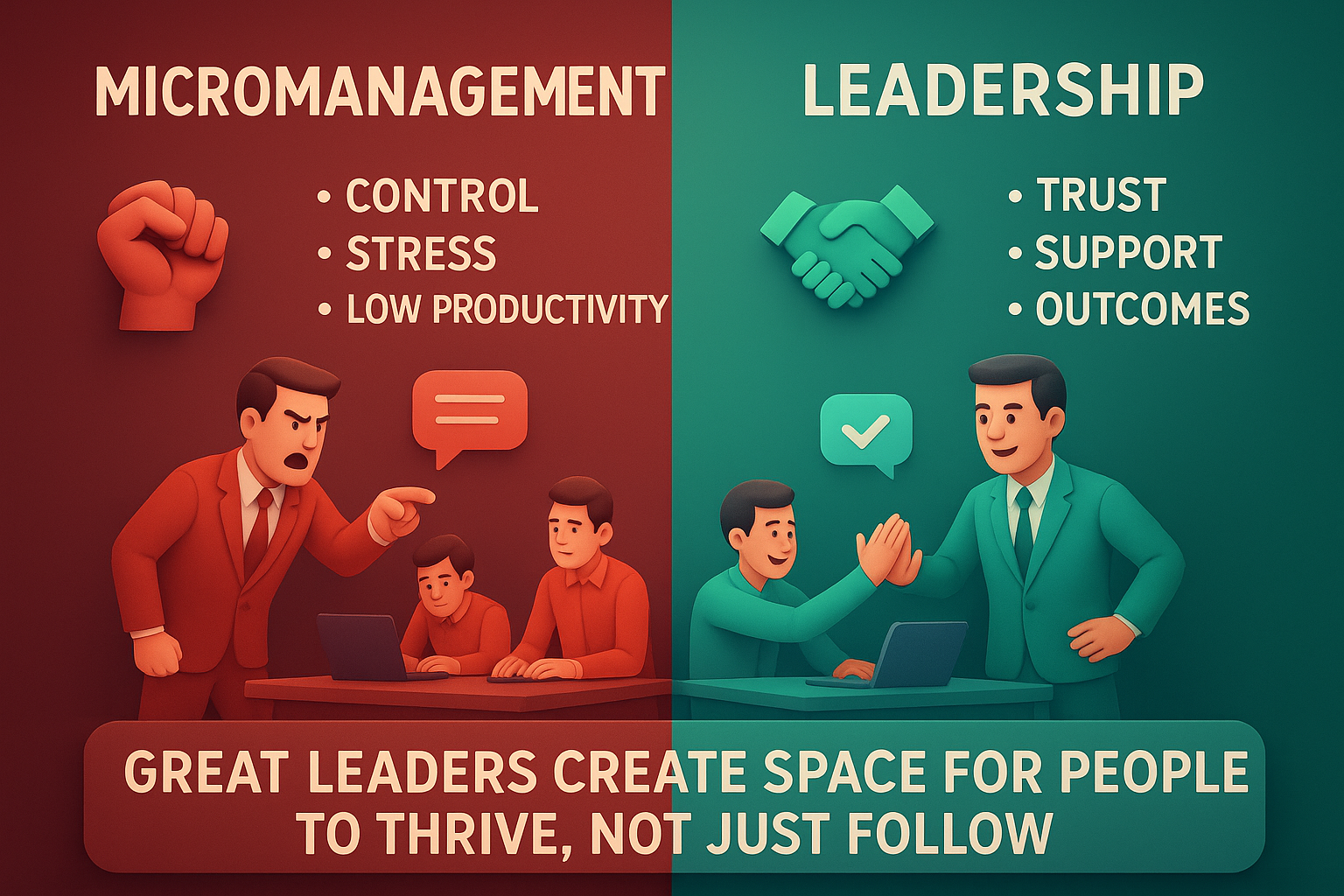Breaking Free from Micromanagement: How Great Leaders Empower Teams
Credits: Leadership & Team Management Insights
Micromanagement is one of the biggest barriers to productivity and team growth. While micromanagers believe they are guiding the team to success, the reality is often the opposite—they slow things down, frustrate employees, and limit innovation.
🔹 What Micromanagers Think vs. What Really Happens
The image above explains it perfectly:
- What Micromanagers Think They Do:
They believe they are leading from the front, pushing the team forward. - What They Really Are Doing:
Instead of helping, micromanagers often hold the team back. Their constant interference reduces efficiency and makes people feel undervalued.
🔹 Why Micromanagement Fails
Micromanagement leads to:
❌ Low employee morale
❌ Reduced creativity and innovation
❌ Increased stress and burnout
❌ Slower project outcomes
In today’s competitive workplace, businesses need self-driven, empowered teams, not workers who constantly wait for approval.
🔹 The Better Approach for Leaders
Great leaders don’t control every move—they empower their teams. Here’s how:
✅ Set clear goals, not tasks → Define the destination, but let the team decide how to get there.
✅ Trust your team’s expertise → You hired them for their skills; now let them use those skills.
✅ Support instead of control → Provide resources, remove roadblocks, and guide when needed.
✅ Measure outcomes, not activity → Focus on results, not whether every step matches your personal style.
🔹 The Impact of Empowerment
When leaders shift from micromanagement to empowerment:
- Teams become more engaged and motivated
- Productivity increases significantly
- Creativity and innovation thrive
- Employee retention improves
In other words, leadership becomes about creating space for people to succeed, not just making them follow orders.
💡 Final Thoughts
Micromanagement is outdated and damaging. The modern workplace requires leaders who can inspire, trust, and empower their teams.
If you want long-term success, shift from being a micromanager to being a true leader who builds trust, sets vision, and measures meaningful results.
Great leaders create space for people to thrive—not just follow.
